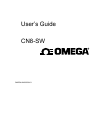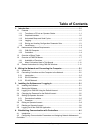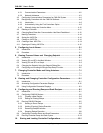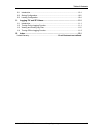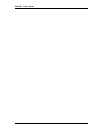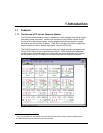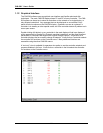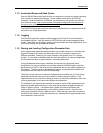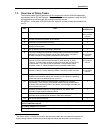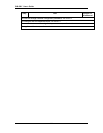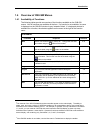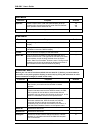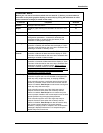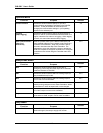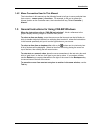
Introduction
1-3
1.1.3 Automated Ramp and Soak Cycles
Use the CN8-SW Ramp and Soak function to configure any number of recipes consisting
of any number of ramp and soak steps. These recipes are stored on the CN8-SW
computer. Under the direction of CN8-SW, any controller on the network can execute
your choice of recipe, even models that do not support configuration and execution of
ramp and soak cycles using the controller front panel.
The CN8-SW displays also provide a quick way to configure and run recipes that use the
controllerÕs own recipe parameters.
1.1.4 Logging
The CN8-SW application supports optional logging of SP and PV for all controllers at
configurable intervals. Logs are saved in ASCII text files with comma-separated-value
format. These files can be viewed, printed, and manipulated with other applications, such
as word processing and spreadsheet software.
1.1.5 Storing and Loading Configuration Parameter Sets
All the configuration parameter values stored in non-volatile memory in a controller that
supports Omega Plus Protocol can be saved to the PC and loaded to the same or
different controllers. Backing up a unique controller configuration on a PC is always
prudent. If a controller is damaged later and must be replaced, its custom configuration
can be loaded quickly to a spare controller, minimizing down time.
In large installations where many controllers use the same (or almost the same)
configuration, its easy to configure one controller using the CN8-SW display, save the
parameter set to the PC, then load the same parameter set to many other controllers on
the network. The time saved by eliminating the need to configure each controller at its
front panel more than pays for the CN8-SW package.
The ability to store and load a controller configuration also enables you to reuse tuning
parameter values that have proved to be best for certain process conditions. If the
responsiveness of your process is altered at times, you may find it desirable to save sets
of tuning parameters to be used under different circumstances.
For example, if you autotune the controller for optimum control of the temperature of an
engraving cylinder while one size is in use, save the parameter set before installing a
larger or smaller cylinder. The different size cylinder may heat at a different rate,
requiring different tuning parameters to be used for optimum control. Save the new
tuning as a parameter set with a different name. When the day comes that you have to
reinstall the first cylinder, reload the parameter set, including the tuning parameters that
were optimized for that cylinder.



